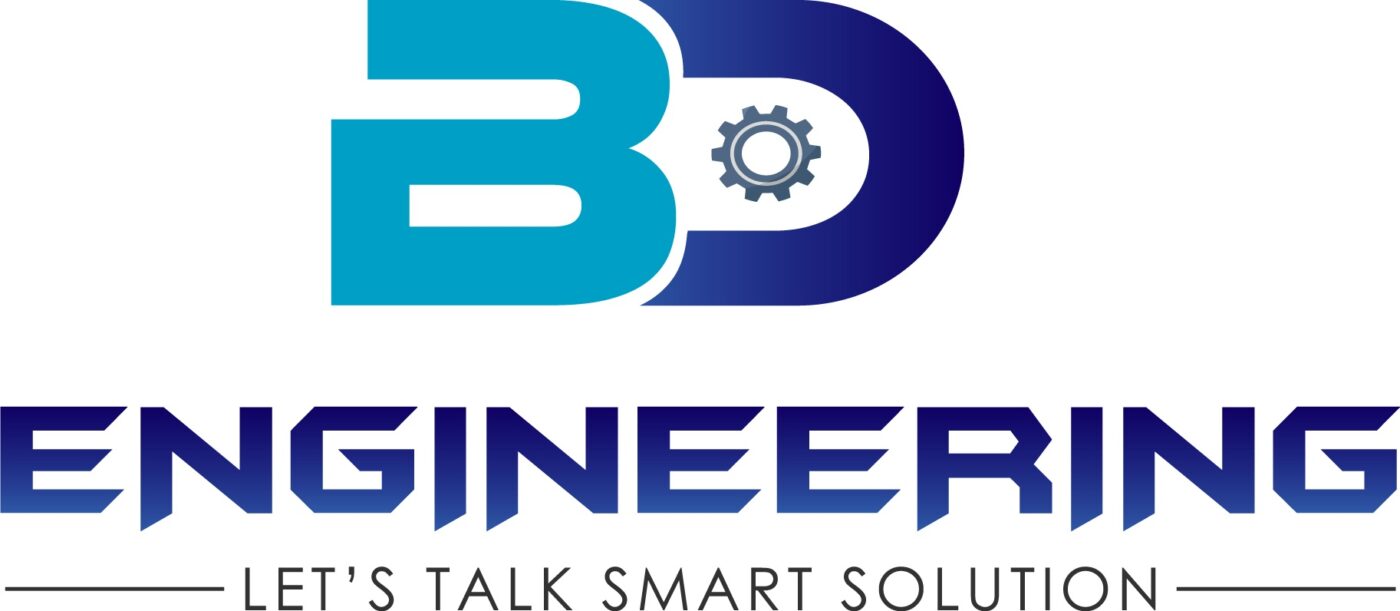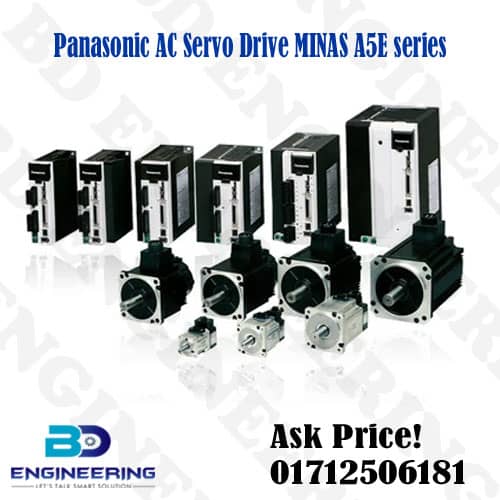AC Servo Drive and Motor supply & maintenance in bd
A servo drive and motor system is a combination of a servo motor and a servo drive that work together to provide precise control and positioning of mechanical systems in various applications. The servo drive controls the servo motor’s speed, torque, and position, enabling accurate and dynamic motion control.
AC Servo Motor:
A servo motor is a high-performance motor designed specifically for applications that require precise control of position, speed, and torque. Servo motors typically have low inertia, high torque-to-inertia ratio, and high dynamic response capabilities. They come in various types, including brushless DC motors and AC synchronous motors.
AC Servo Drive:
The servo drive is an electronic device that powers and controls the servo motor. It receives command signals from a controller or a motion control system and generates the appropriate voltage and current signals to drive the motor. The servo drive regulates the motor’s speed, torque, and position by adjusting the electrical power supplied to the motor windings.
Feedback Device:
A servo system also incorporates a feedback device, such as an encoder or resolver, which provides position and speed feedback to the servo drive. This feedback information allows the drive to continuously compare the commanded position or speed with the actual position or speed of the motor. It enables closed-loop control, where the drive can make adjustments to ensure accurate motion control.
Control Algorithms:
Servo drives often include advanced control algorithms to achieve precise control over the motor. These algorithms include proportional-integral-derivative (PID) control, feedforward control, and adaptive control techniques. The control algorithms optimize the motor’s performance, responsiveness, and stability by adjusting the drive’s output based on the feedback signals.
Communication Interfaces:
Servo drives may feature various communication interfaces, such as Ethernet, CAN bus, or serial communication protocols. These interfaces allow integration with higher-level control systems, such as PLCs or motion controllers, enabling seamless communication and coordination within the overall automation system.
AC Servo Drive function:
- A Servo Drive is an electronic amplifier that provides power to an AC Servo Motor based on control signals received from a motion controller or PLC.
- It controls the torque, velocity, and position of the servo motor by varying the supplied voltage and frequency.
Key Features:
- Closed-Loop Control: Servo drives operate in a closed-loop control system where feedback from encoders or resolvers on the motor shaft is used to adjust motor performance in real-time.
- High Precision: Offers high precision and accuracy in motion control, suitable for applications requiring precise positioning and speed control.
- Dynamic Response: Rapid response times and high dynamic performance make them ideal for applications with fast acceleration and deceleration requirements.
- Communication Interfaces: Typically equipped with various communication interfaces (e.g., Ethernet, CANbus) for integration with control systems.
Applications:
- Industrial Automation: Used in CNC machinery, robotics, packaging machines, semiconductor manufacturing, and other automated systems requiring precise motion control.
- Material Handling: Suitable for conveyor systems, pick-and-place operations, and sorting applications.
- Printing and Labeling: Used in printing presses and labeling machines for accurate print registration and label placement.
AC Servo Motor Function:
- An AC Servo Motor is a specialized type of electric motor designed for use with servo drives to achieve precise motion control.
- It converts electrical energy into mechanical motion, providing high torque at low speeds and maintaining speed consistency.
Key Features:
- High Torque Density: Provides high torque output relative to its size, allowing for compact machine designs.
- Low Inertia: Low rotor inertia enables rapid changes in speed and direction, enhancing dynamic performance.
- Feedback Device: Equipped with encoders or resolvers to provide feedback on rotor position and speed for closed-loop control.
- High Efficiency: Operates efficiently across a wide range of speeds, reducing energy consumption and heat generation.
Applications:
- Robotics: Used in robot joints and arms for precise movement and control in industrial and collaborative robot applications.
- Machine Tools: Drives spindle motors in CNC machines for accurate machining operations such as milling, drilling, and grinding.
- Packaging Machinery: Powers servo-driven axes in packaging lines for precise positioning of packages and materials.
Selection Considerations
- Performance Requirements: Determine the torque, speed range, and acceleration/deceleration characteristics needed for your application.
- Environmental Conditions: Consider factors such as temperature, humidity, and exposure to dust or chemicals that may affect motor and drive performance.
- Compatibility: Ensure compatibility between the servo drive and motor in terms of voltage, current ratings, and communication protocols.
- Integration: Verify compatibility with your existing control system and software interfaces (e.g., PLCs, motion controllers).
Popular Manufacturers
- Siemens
- ABB
- Yaskawa
- Mitsubishi Electric
- Rockwell Automation (Allen-Bradley)
- Schneider Electric
- Delta Electronics
These manufacturers offer a range of AC Servo Drives and Motors with various specifications and capabilities to meet the needs of diverse industrial automation applications. When selecting AC Servo systems, it’s essential to assess specific application requirements, performance expectations, and integration considerations to achieve optimal results in motion control and automation tasks.

